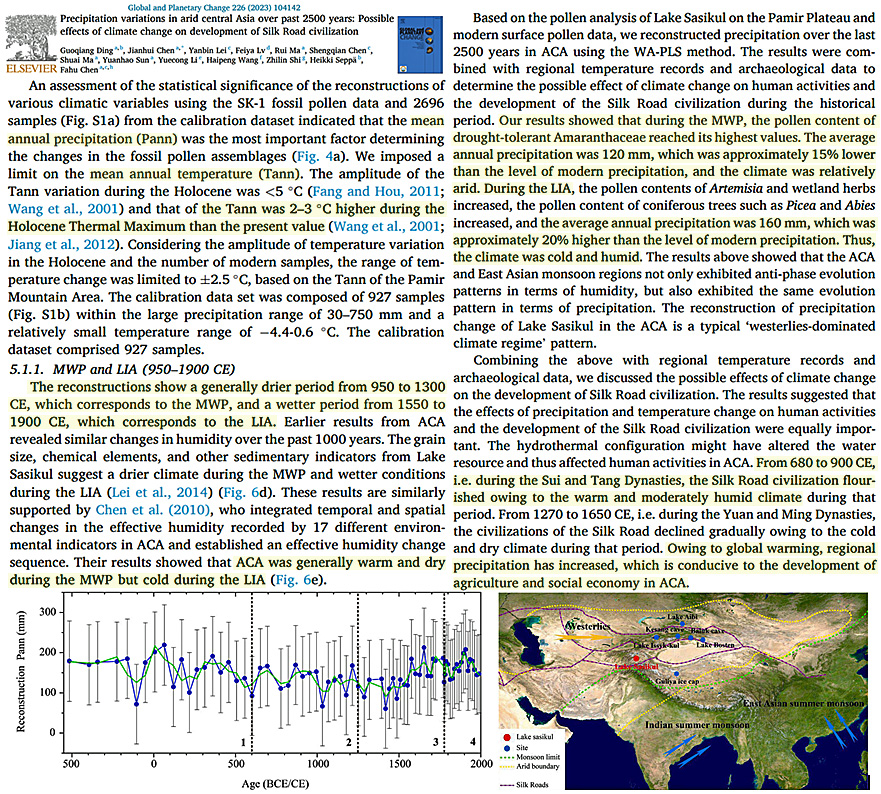The mean annual temperature was 2-3°C warmer than present during the Holocene Thermal Maximum in arid central Asia.
Over the last few millennia, Silk Road human civilizations (e.g., Sui, Tang, Ming, Yuan Dynasties) flourished during warm periods and declined during cool periods (Ding et al., 2023).
The modern hydroclimate in this region does not stand out as unusual, but instead the reconstructed mean annual precipitation record has today’s trends falling about halfway between that of the Medieval Warm Period and Little Ice Age.
In other words, there is nothing unprecedented or outside the range of natural variability occurring today in this region.
“ACA [arid central Asia] was generally warm and dry during the MWP but cold during the LIA.”
“Our results showed that during the MWP [Medieval Warm Period], the…average annual precipitation was 120 mm, which was approximately 15% lower than the level of modern precipitation, and the climate was relatively arid.”
“During the LIA [Little Ice Age], the average annual precipitation was 160 mm, which was approximately 20% higher than the level of modern precipitation. Thus, the climate was cold and humid.”






[…] New Study: Modern Central Asia Climate Halfway Between Medieval Warmth And Little Ice Age […]